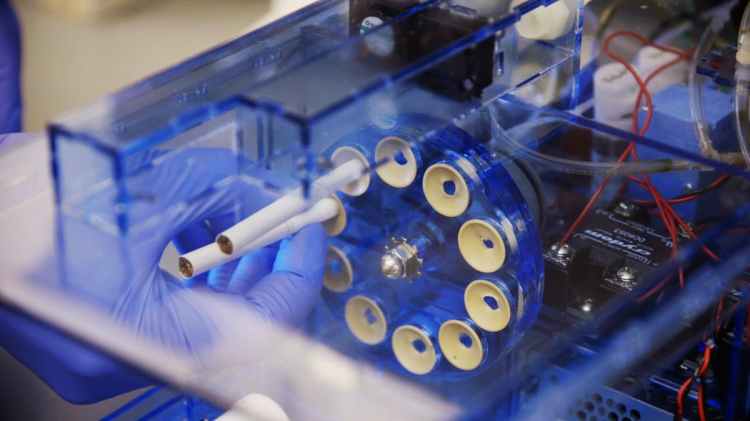A Research System Developed to Smoke Cigarettes Like a Human With Lung Cells on a Chip
A team at Harvard‘s Wyss Institute for Biologically Inspired Engineering has developed a research system that can smoke cigarettes like a human by passing smoke through their human lung small airway-on-a-chip model. The system has a mechanical element that can light and puff cigarettes to provide the smoke. This gives the researchers a better model for studying chronic obstructive pulmonary disease (COPD) than traditional methods that make use of a liquid cigarette extract.
The team published their work in an article in the journal Cell Systems.
In an article in Cell Systems, a multidisciplinary team at the Wyss Institute for Biologically Inspired Engineering describes an instrument they engineered that can ‘breathe’ in and out, actively smoke regular and electronic cigarettes much like a human, and then deliver the smoke to microfluidic organs-on-chips lined by human lung small airway cells isolated from non-smokers or COPD patients. The integrated smoking system enables a better understanding of smoke-related pathological changes in individual smokers, and could facilitate the discovery of more accurate biomarkers and new therapeutic targets.
images via Harvard University
via IEEE Spectrum









